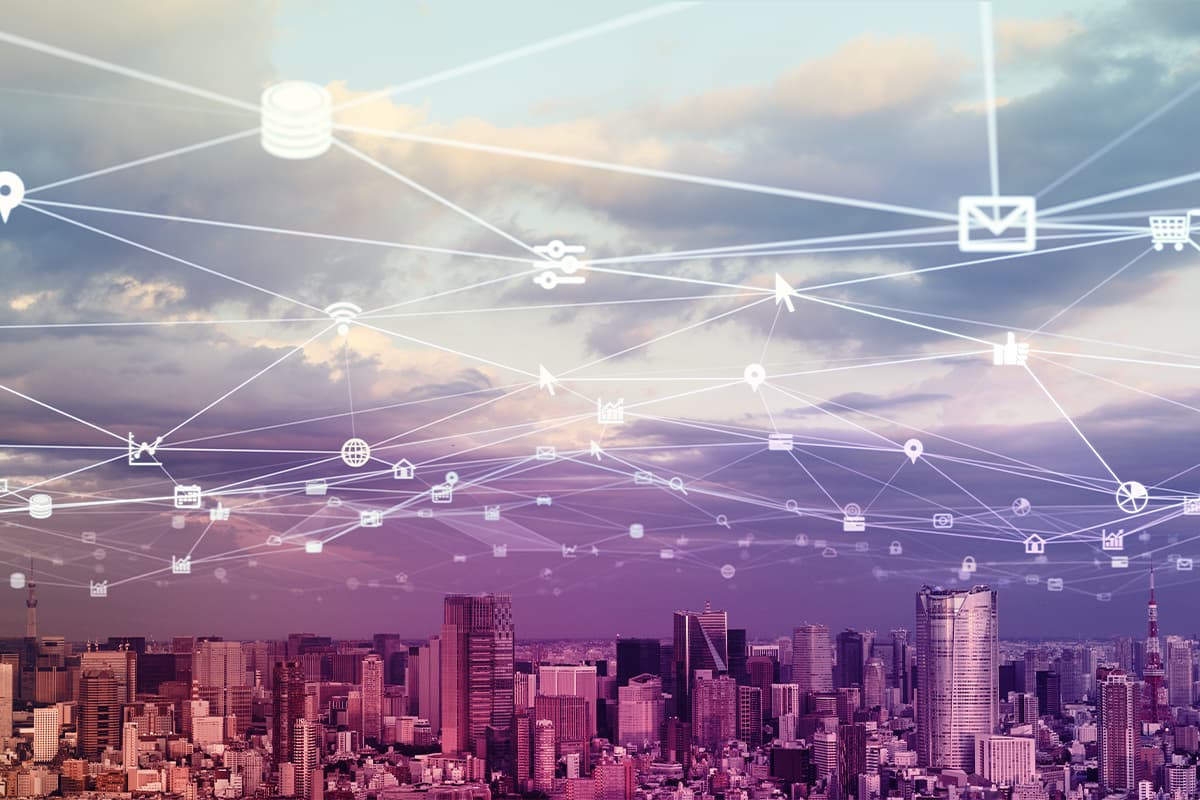
What is in this article?
LoRaWAN (Low Range Wide Area Network) is known as a wireless network protocol that offers low power consumption, long range and secure data communication.
LoRaWan fosters the integration of crucial principles like efficiency and sustainability, which hold significant relevance in the highly competitive modern business landscape while its versatility extends to various domains, spanning across smart cities, energy management, agriculture, and logistics. So what is behind the strange concept of LoRaWAN and what benefits does it offer to the business world?
In our blog, we will discuss in detail the important technology that forms the basic infrastructure for IoT (Internet of Things) based projects and try to show you its value in professional life.
Feel free to continue reading our compiled blog, where you'll find in-depth information about the wireless network protocol that underpins IoT (Internet of Things) projects and get answers to your questions.
What Is Lora? Why Was It Developed?
LoRa is a long-range wireless communication technology that offers low power consumption and long range. It is mainly used for Internet of Things (IoT) applications. The central purpose driving the development of this technology was to fulfill the critical demands of IoT devices concerning energy efficiency and communication range LoRaWAN is the network protocol on which the technology is based.
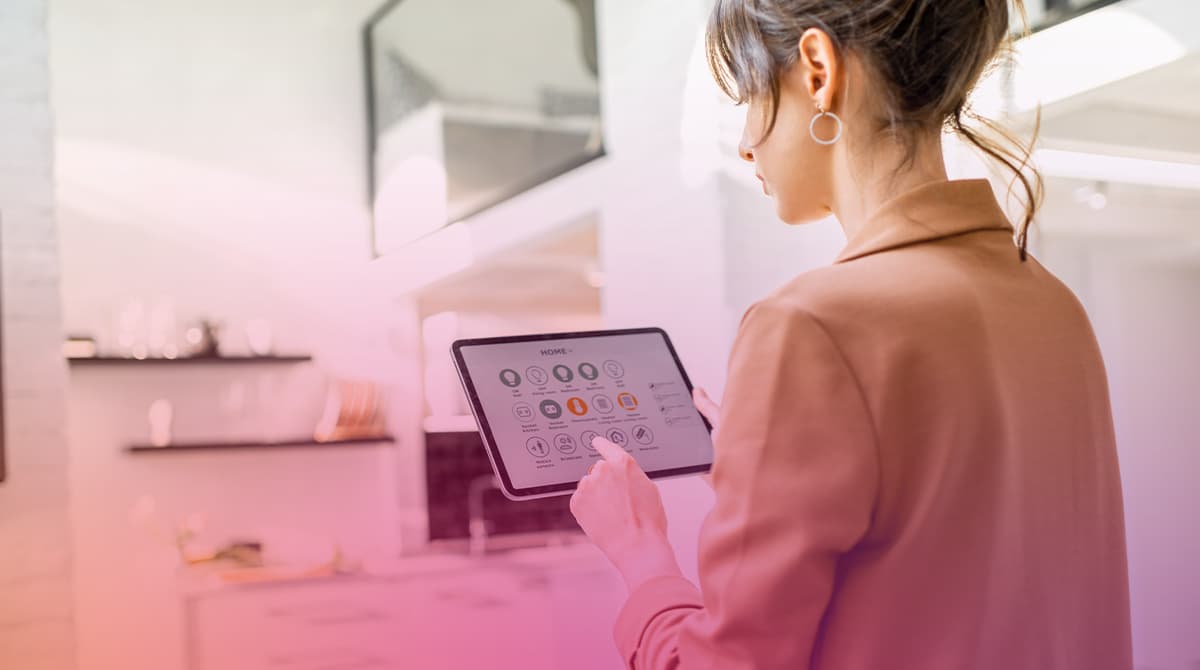 LoRa was developed by Semtech, a Swiss company, and is now widely used worldwide. The technology offers high energy efficiency so that IoT devices can be operated for longer. Furthermore, systems with long-range communication capabilities are particularly well-suited for smart city projects and similar applications.
LoRa was developed by Semtech, a Swiss company, and is now widely used worldwide. The technology offers high energy efficiency so that IoT devices can be operated for longer. Furthermore, systems with long-range communication capabilities are particularly well-suited for smart city projects and similar applications.
The frequently asked question Why was Lora developed? can be answered as follows: Nowadays, energy efficiency has become more important due to the deployment of billions of IoT devices and the need for continuous data transmission.
At the same time, communication distance is also of great importance as devices need to operate in different areas. LoRa enables efficient and reliable communication of IoT devices by combining these two features.
LoRaWAN on the other hand is the cornerstone of LoRa that offers low power consumption and long range. The network protocol enables the transmission of data collected by IoT devices to a central server. This way, devices can conserve energy while maintaining robust data security.
LoRa and LoRaWAN technologies play a significant role in fostering energy-efficient and long-range IoT applications' development.
What Is Lorawan?
The successful deployment of Internet of Things (IoT) applications in diverse fields has been made possible, thanks to the advancements in LoRa technology. In this context, the term LoRaWAN occupies an important place. So what is LoRaWAN and what are its advantages?
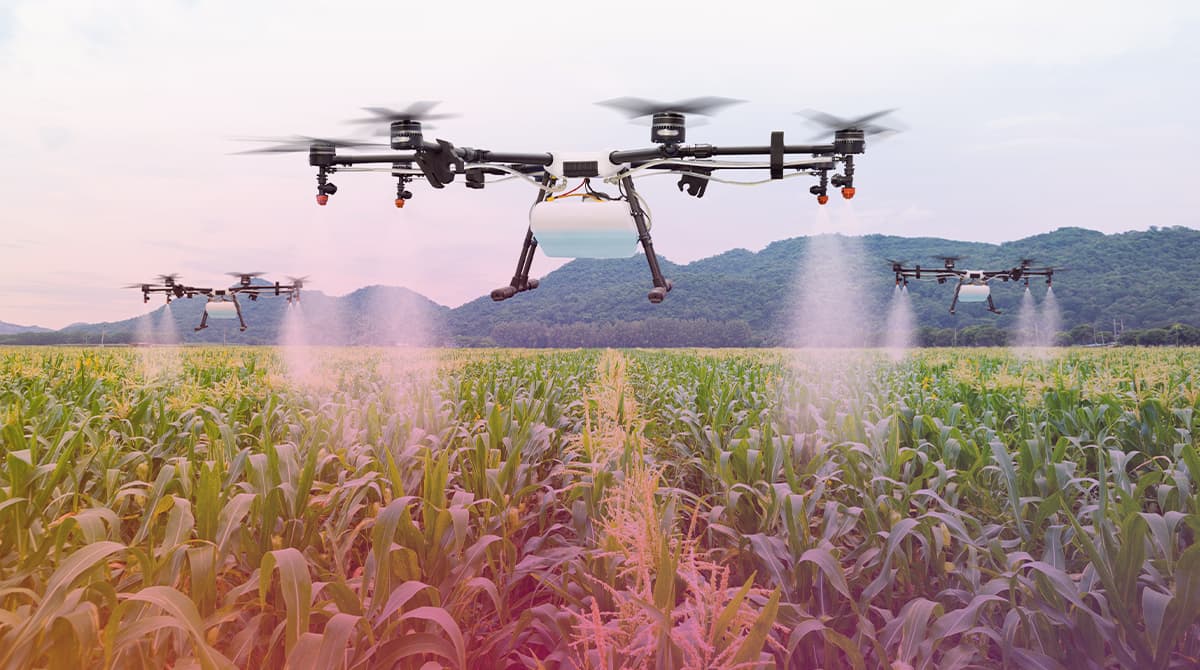 LoRaWAN is an open-source protocol that enables low power consumption and long-range communication. Thanks to the protocol, the energy efficiency and communication capabilities of IoT devices can be increased while enabling coverage over a wider area. In short, LoRaWAN is a communication standard that offers energy savings, wider coverage and reliable communication.
LoRaWAN is an open-source protocol that enables low power consumption and long-range communication. Thanks to the protocol, the energy efficiency and communication capabilities of IoT devices can be increased while enabling coverage over a wider area. In short, LoRaWAN is a communication standard that offers energy savings, wider coverage and reliable communication.
Low energy consumption, one of the biggest advantages of LoRaWAN, significantly extends the battery life of IoT devices. Consequently, adopting an environmentally friendly approach through LoRa technology allows for reduced operating costs and energy savings.
On the other hand, IoT devices can operate more efficiently thanks to their ability to communicate over long distances, especially in rural areas and large geographical spaces.
In addition, the LoRaWAN protocol helps IoT devices protect user data by providing a secure communication environment. This allows the necessary measures to be taken to protect personal information and trade secrets.
LoRaWAN offers low power consumption, long range, and secure communications, enabling the successful deployment of Internet-of-Things applications. With these advantageous features, IoT technology enables significant productivity gains across various sectors.
How Does Lorawan Work?
LoRaWAN is a communication protocol specifically designed for IoT (Internet of Things) applications that require long range and low power consumption. So how does LoRaWAN work?
The LoRaWAN system consists of four basic components: Client devices, network servers, gateways and application servers.
- Client Devices: Devices that want to connect to the LoRaWAN network.
- Network Server: The network server software manages the LoRaWAN network with functions such as data exchange, sensor authorization, and more.
- Gateways: A gateway is a type of network hardware that enables the transfer of data frames between two different computer networks. This device acts as a bridge between networks that use different network communication rules, allowing data to communicate. They also work in the reverse direction, sending data from the network server to the nodes.
- Application Server: Contains the software responsible for securely processing application data.
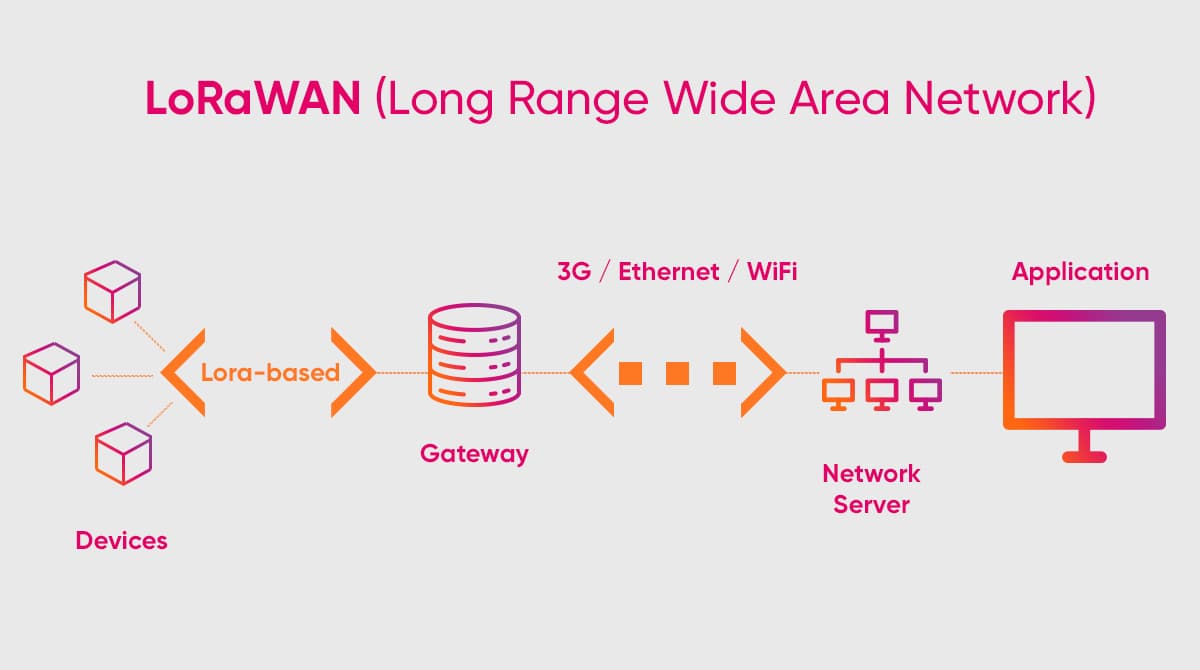
Features of LoRaWAN
LoRaWAN technology is frequently favored in IoT projects because of its exceptional energy efficiency and extensive communication range. Its features are as follows:
- Low power consumption is one of the biggest advantages of LoRaWAN. This allows sensors and other devices to run on battery power for a long period of time, which reduces maintenance. By leveraging these capabilities, IoT applications can achieve enhanced operational efficiency while simultaneously reducing costs.
- LoRaWAN's impressive wide coverage holds great significance for applications like remote monitoring and control. In addition, LoRaWAN enables the transmission of signals between reinforced concrete structures.
- LoRaWAN has a bidirectional communication capability. This allows data to be collected from sensors as well as commands to be sent to devices. This feature enhances the flexibility and availability of IoT systems, enabling seamless adaptation to a broader range of application scenarios.
- LoRaWAN has advantages in terms of security. End-to-end encryption methods guarantee the confidentiality and accuracy of data, effectively preventing unauthorized access. This provides a secure infrastructure for IoT projects.
- LoRaWAN is characterized by its scalable structure. The technology is versatile, finding application in various fields, from small-scale projects to large industrial endeavors. Its adaptability and scalability make it readily adjustable to suit the specific requirements of businesses.
What Are the Advantages of Lorawan?
Some of the many advantages that LoRaWAN technology offers:
- Long Range: LoRaWAN can enable communication between devices that are miles away while keeping energy consumption low.
- Low Energy Consumption: LoRaWAN technology was designed to maximize energy savings. Devices can be optimized to have years of battery life and minimize maintenance requirements, providing cost savings to businesses.
- High Capacity: LoRaWAN network can support the connection of thousands of devices, making it ideal for large-scale IoT projects. It also uses adaptive data rates to optimize the data transfer rate and reliability of each device in the system.
- Security: LoRaWAN technology ensures data security through end-to-end encryption. This feature ensures that communication between devices is safe and secure.
- Flexible: LoRaWAN is suitable for global deployment as it can operate on different frequency bands. Therefore, it can provide integrated solutions to businesses by deploying independent IoT networks around the world.
- Easy to Scale: LoRaWAN technology allows for rapid scalability, easily accommodating the needs of businesses by seamlessly incorporating new devices into the network.
Thanks to the advantages offered by LoRaWAN, IoT projects can be implemented with a focus on high energy efficiency and extensive coverage. This gives companies a competitive advantage as they can offer smarter and more sustainable solutions.
Importance of LoRaWAN for the IoT
The Internet of Things (IoT) is becoming increasingly important in today's world, enabling objects to connect and exchange data over the Internet. At this point, reliable, energy-efficient and wide-area networks are required for the success of IoT applications. This is exactly where LoRaWAN comes into play.
LoRaWAN is a long-distance, low-power wireless communication protocol designed for use in IoT projects. The significance of this technology for the Internet of Things (IoT) becomes especially apparent through its notable energy efficiency and wide coverage area.
LoRaWAN's low energy consumption offers a cost advantage by extending the battery life of devices such as sensors that are constantly sending and receiving data. Simultaneously, this technology proves to be ideal for IoT projects that encompass a vast geographic area. Thanks to its long-distance transmission capability, the quality and speed of data transmission are maintained even as the distance between devices increases.
LoRaWAN Device Classes: Scope of Use
LoRaWAN devices are designed to be used in a variety of areas. Devices are categorized into classes as defined by the LoRa Alliance, a non-profit organization dedicated to promoting awareness of LoRaWAN in the market. Each class possesses distinct characteristics. These classes can be listed as follows:
Class A (Triggered listening, low battery consumption): All LoRa devices operate in a Class A compliant manner to minimize battery consumption and save power. While the end devices can continuously send messages to the gateways, the network is in a constant sleep mode. This saves power because the end devices are not wasting energy listening to the network. However, in this case, downlink communication from the gateway to the end device is not always possible (downlink communication refers to the process of transmitting data from a source, such as a satellite or wireless network, to the receiving device). A downlink can only be performed after an uplink operation. The gateway forwards the data from the end device to the server and returns a response from the server that an acknowledgement message (ACK) has been received indicating that communication has taken place. The gateway can forward this response to the end device as a LoRa packet. Thus, a downlink is performed immediately after an uplink operation.
Class A LoRaWAN devices have a wide range of applications. These devices use LoRaWAN, a long-range, low-power network protocol. Below are some areas where Class A LoRaWAN devices are commonly used:
- Industrial Automation: They can be effectively utilized for data collection and control in industrial automation systems. They can collect environmental data through sensors and transmit this data to a central server.
- Smart City Applications: LoRaWAN technology plays an important role in smart city applications. Class A devices can be used in a variety of applications such as monitoring street lighting systems, traffic management, and parking lots.
- Agriculture: In agriculture, LoRaWAN technology finds applications in various functions, including field monitoring, irrigation system control, and weather monitoring. These devices can also be effectively used in precision agriculture.
- Remote Monitoring and Control: They can also be used effectively in remote monitoring and control. For example, they can be put to use in monitoring the level of water tanks or doing automatic readings.
Class B (Periodic Listening, Balanced Battery Consumption): Class B devices perform time-controlled data communication. In order for the device to receive data, the gateway must receive a beacon signal at specific time intervals indicating that it is synchronized.
If the terminal device and gateway are not synchronized, no downlink, i.e. no data transmission, can take place. Likewise, uplink can only occur during these specific time intervals. In short, Class B devices can only send and receive messages during specific time periods. Some areas where Class B devices are used are as follows:
- IoT: Employed in a wide range of applications. These devices are particularly preferred for data communications in the Internet of Things (IoT) domain.
- Agriculture: Various agricultural applications can make use of them, including monitoring plant growth, regulating soil moisture, or tracking animal whereabouts. They also play an important role in smart city projects in areas such as traffic management, parking monitoring and pollution monitoring.
- Industrial Automation: Class B devices are used to monitor energy consumption, control smart building systems and optimize fault management. Additionally, in the logistics and transportation industries, they are the favored choice for transportation and inventory management solutions.
Class B LoRaWAN devices can also be used in many other applications such as security systems, smart home automation and healthcare. Due to their versatile and extensive wireless communication capabilities, these devices possess a broad spectrum of applications and are anticipated to experience even greater adoption in the future.
Class C (Continuous Listening, High Battery Consumption): With class C devices, downlink communication can be enabled at any time by continuous listening. This means that message reception is continuous and not at regular intervals. This can ensure real-time data transmission without delays. While this is generally advantageous for critical applications, it can result in high battery consumption due to constant listening. Class C devices are capable of continuously receiving and transmitting messages.
Class C LoRaWAN devices offer a broad array of applications. These devices feature long range and low power consumption and are used to build wireless sensor networks. Below are some areas where Class C LoRaWAN devices are commonly used:
- Smart Cities: LoRaWAN technology plays an important role in smart city projects. It can be utilized in various areas, such as parking management, traffic monitoring, and waste management.
- Agriculture: They employed in diverse applications, including logistics tracking, soil moisture control, and plant growth monitoring, all aimed at enhancing productivity in the agricultural sector.
- Industrial Automation: They serve multiple purposes in industrial settings, including automation processes in factories, energy consumption monitoring, and equipment status monitoring.
- Air Quality Monitoring: LoRaWAN devices can be used to monitor air pollution levels and protect public health.
- Water Resource Management: They are well-suited for applications like water quality measurement and water level monitoring, playing a crucial role in monitoring and managing water resources efficiently and sustainably.
- Security and Monitoring: LoRaWAN devices find significant applications in areas such as home security and asset monitoring.
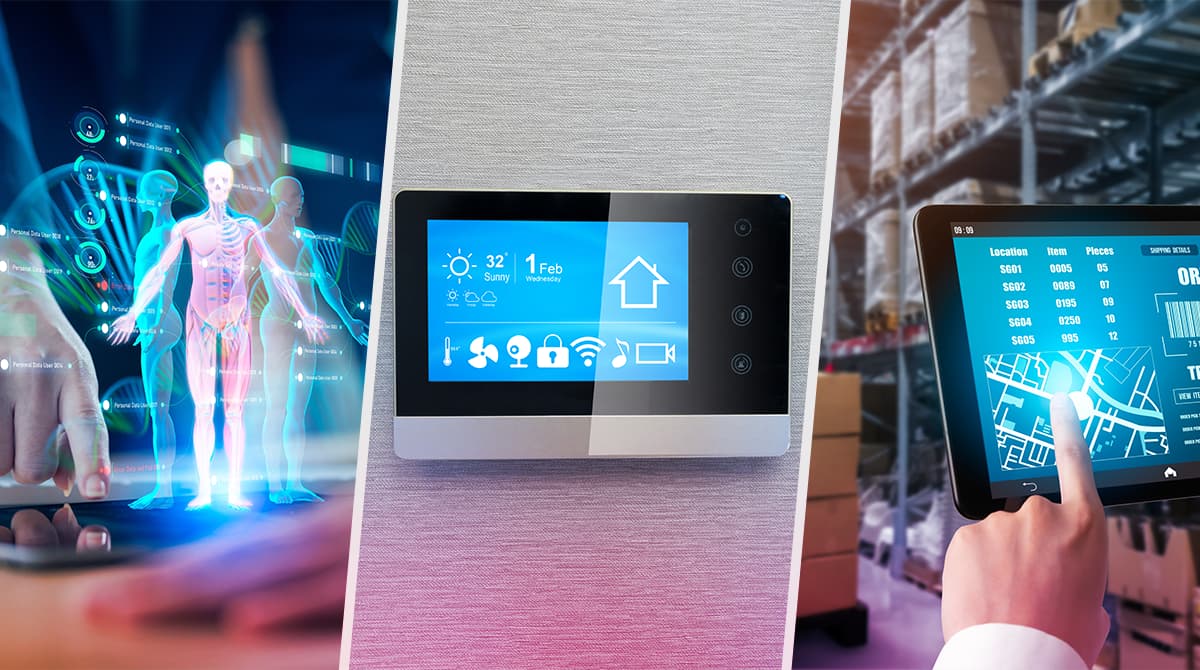
To learn more about electricity poles, which are vital for the transmission of electrical energy and an indispensable aspect of modern life, you can check out our article “What is an Electric Pole? Types and Features of Electric Poles” to satisfy your curiosity on the subject.
By sharing this blog with your loved ones, you can ensure that they receive answers to questions about LoRaWAN, such as its definition, the reasons for its development, how it functions, its features and advantages. This way, they can gain a comprehensive understanding of LoRaWAN and its potential applications. You can also share your ideas with us in the comments.


 Online Services
Online Services Application Inquiry
Application Inquiry Pay Assurance Fee
Pay Assurance Fee Query Installation Number
Query Installation Number Compensation Fee Inquiry
Compensation Fee Inquiry Automatic Payment Order Inquiry
Automatic Payment Order Inquiry Partnership
Partnership

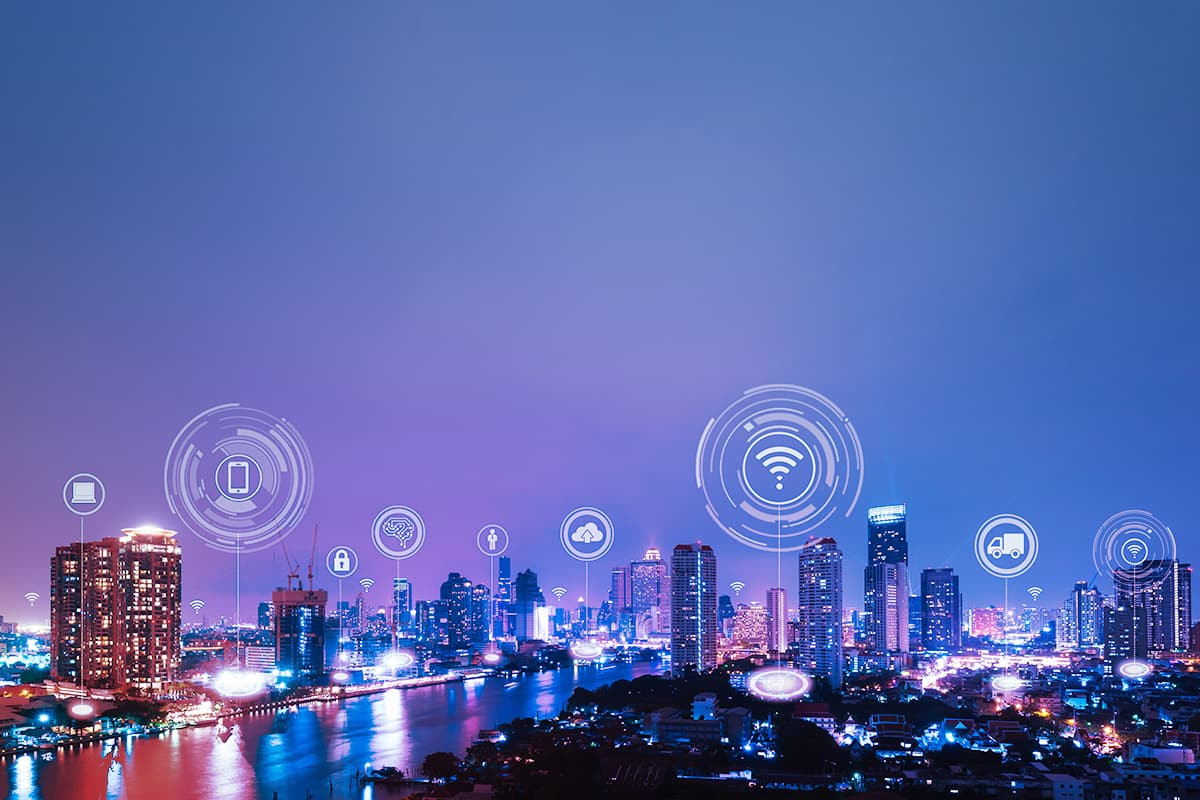
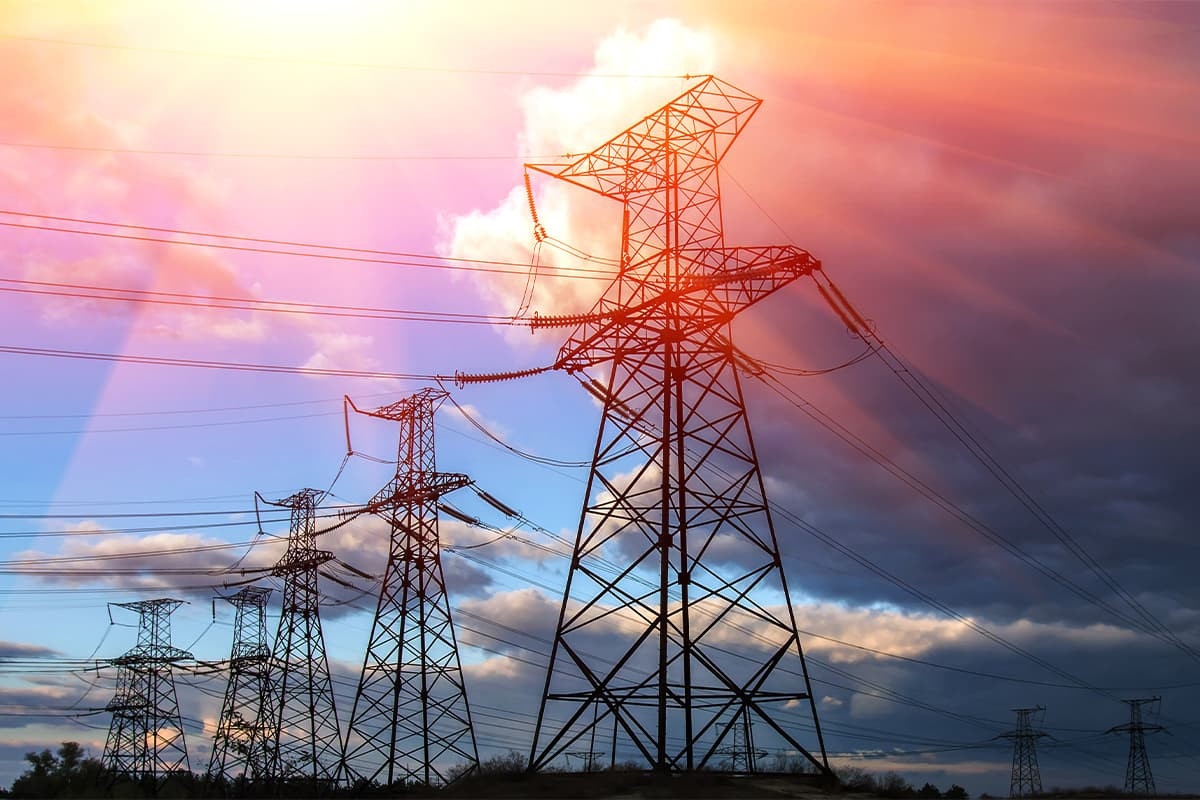
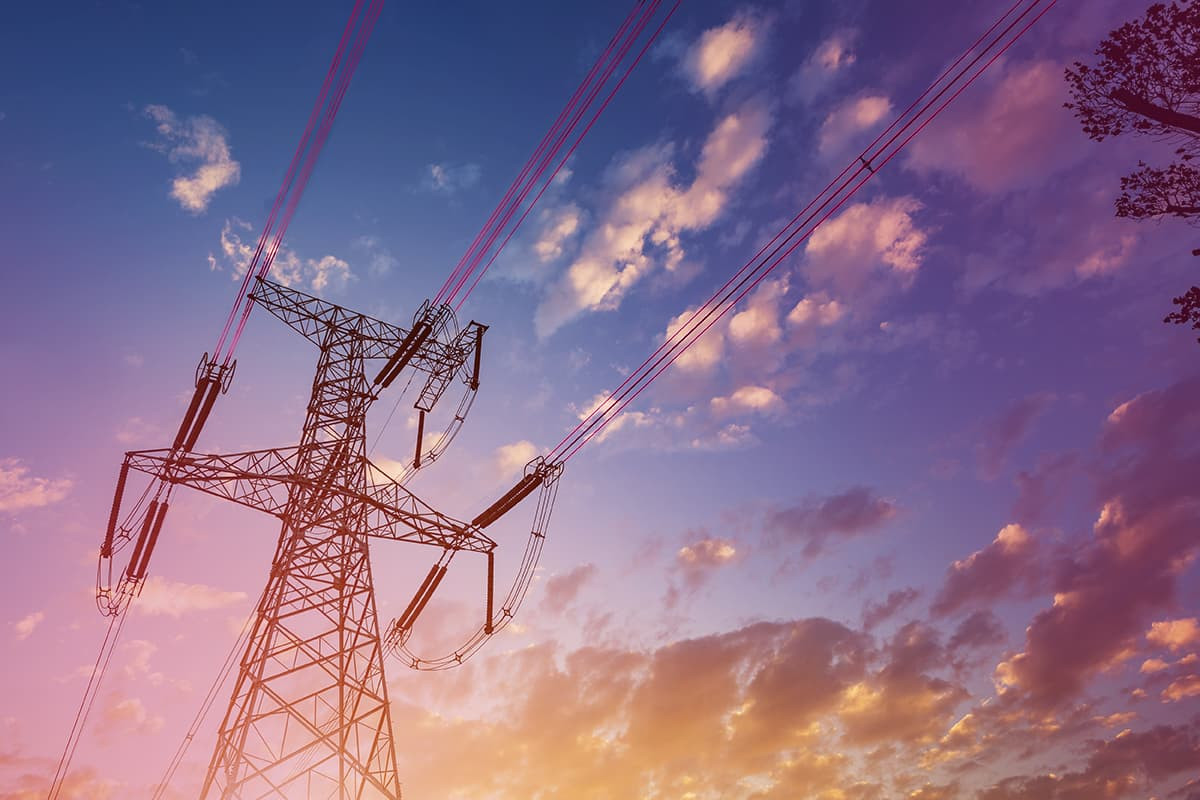
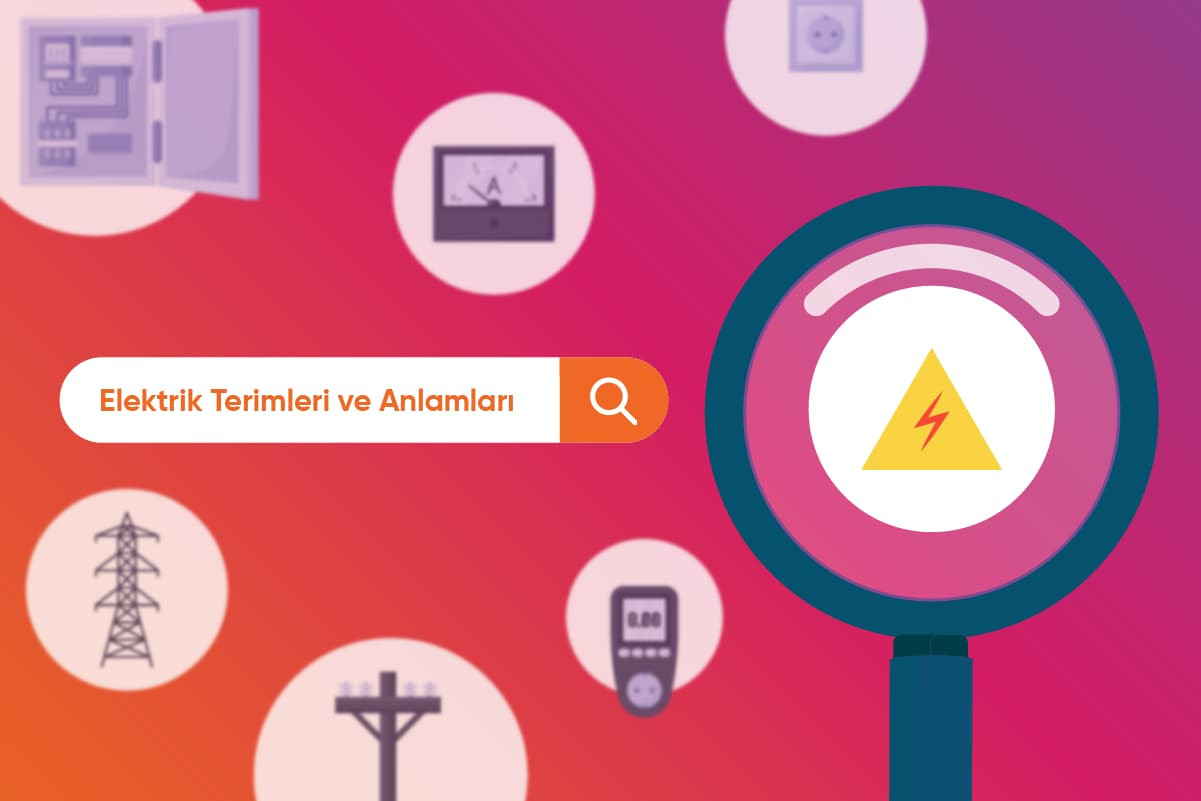
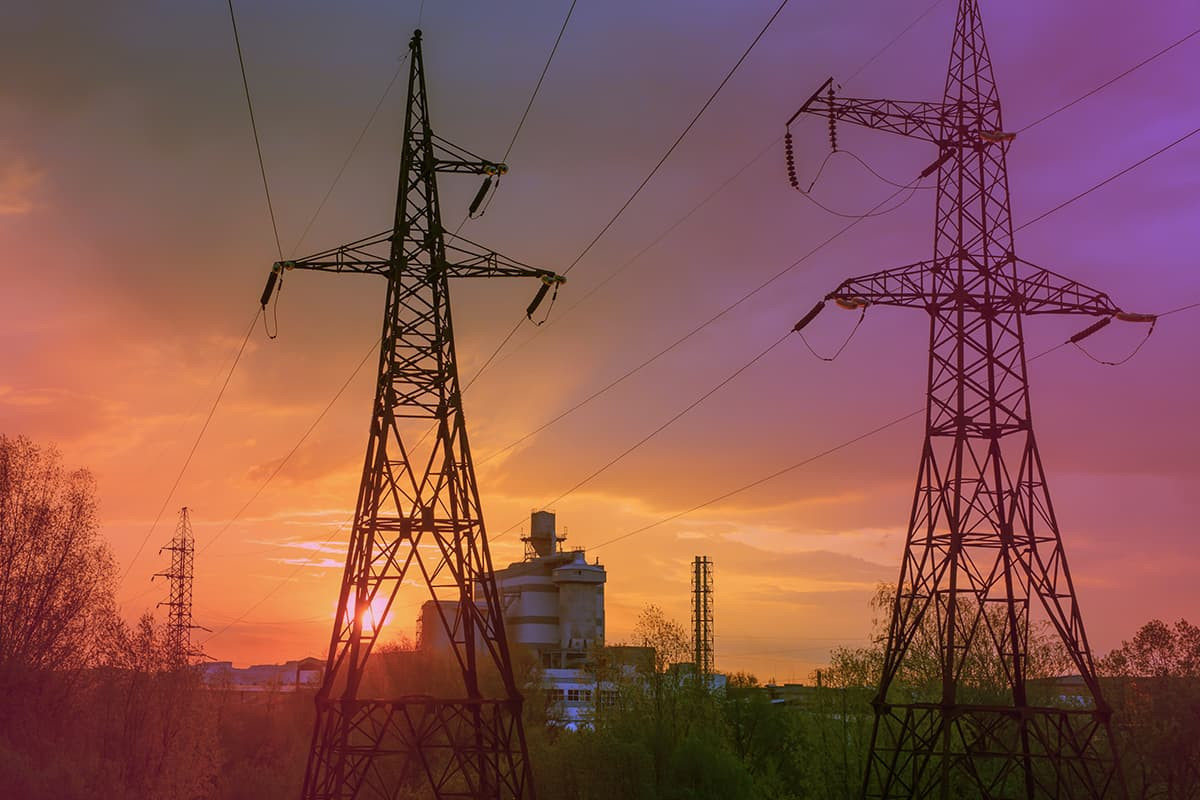
Leave a Comment